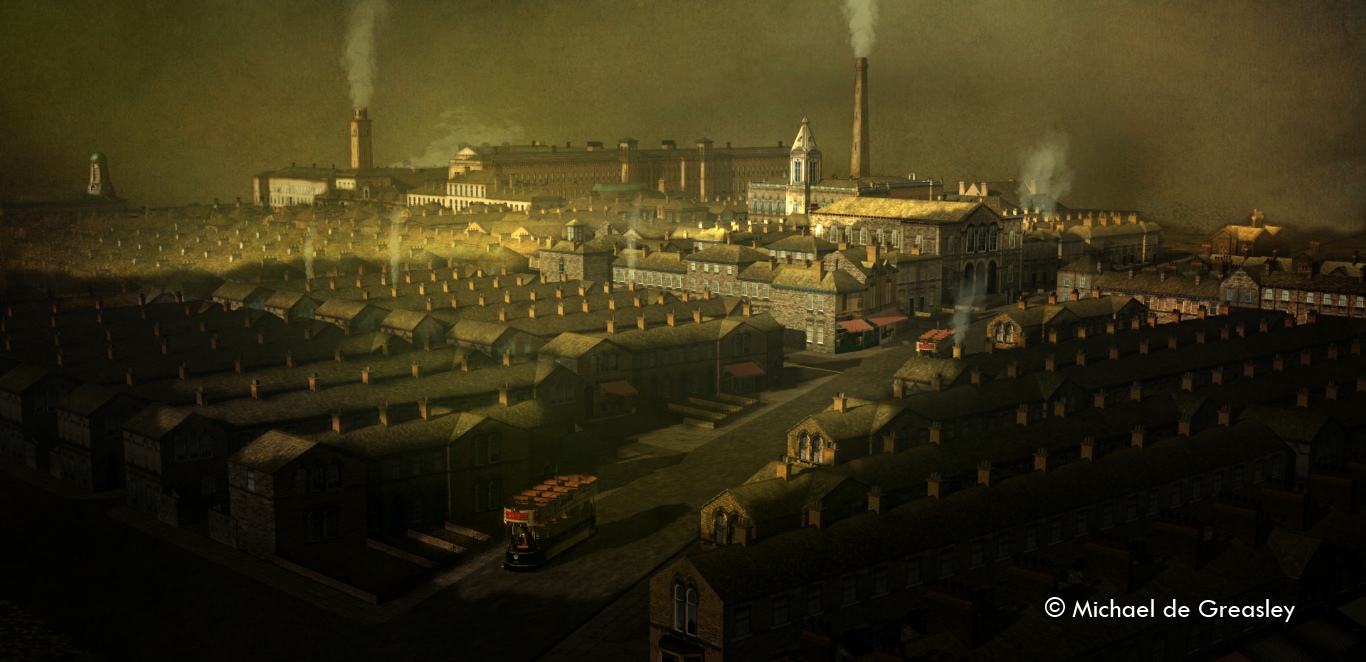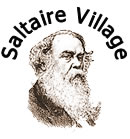Bill Hampshire - a gentle, likeable friend, stalwart supporter and sadly missed
Introduction: Bill Hampshire delivered the talk (below) at the Saltaire History Club meeting on 17 May 2007.
Bill sadly passed away in April, 2013. Bill was one of our most stalwart members, regularly attending our meetings and helping us in our endeavours.
His book "The Water Mills of Shipley" has become a standard reference work which is essential reading for those seeking to understand the local role of the River Aire before the development of Saltaire. Only last week it was being used by one of our members in some current researches. A few years ago Bill took a couple of us along the riverside, showing us the locations of the old mills – a great day out, full of happy memories of an interest shared.
A gentle, likeable friend, Bill will be very greatly missed by all of us in the Club – we valued his knowledge, his kindness and geniality. We celebrate his contribution to local history, and will treasure his memory.
Dave (Shaw)
New Hirst Mill
Bill Hampshire: Two hundred years ago we had three water mills on the Aire in Shipley. The local domestic woollen trade relied on these mills for fulling.
Hirst Mill, at the end of Hirst Lane, stood for many years as Shipley’s only fulling mill. In 1635, the Dixon’s built a second mill. It was on the site where Salts new mill stands. The third, New Hirst Mill, was built in 1745.
This little mill, fifty feet square, was built expressly for fulling. It stood on a ledge of level ground between the river and the steep hillside of Hirst Wood. Like the other mills it had a dam or weir across the river.
You will find the ruins of this mill and its successors, midway between the canal aqueduct and the railway bridge. At low water you can still trace the line of the dam, not at its original height. The old stepping stones lie dispersed on the river bed.
To help bring these broken walls and scattered stones to life, I would like to say a few words about the fulling process and give a brief history of New Hirst Mill.
To make woven woollens acceptable, fulling is essential. Fulling pounds the woven length, or piece, in water with crude detergent, to cleanse the wool and mat the fibres together. The Ancients would walk on the cloth in a trough or stream bed. More efficient water wheels led to the water powered fulling mill. Here heavy wooden mallets in a fulling stock were mechanically lifted and dropped repeatedly on the wet cloth in a wooden trough. This remained the woollen trade’s only mechanised process for many, many years.
In the eighteenth century the local domestic woollen trade was booming. Samuel Denison was a local miller and businessman. He realised the need for another fulling mill. In 1744 he took a long lease from Cyril Jackson, Lord of the Manor. It was for half an acre of ground and the old Forge Goit, with leave to build a dam. The Forge Goit, or Tail Race, is a relic from a failed iron smelting venture of the 1590’s. He also purchased a close on the Bingley bank of the river for access to his dam. No doubt he cut his costs by using the already dug goit. Like the early iron workers he set aside the difficulty of access to this site.
In 1745 his fulling mill with eight stocks, a house, a barn and the dam was completed and mortgaged to Robert Stansfield of Bradford for £600. Denison was declared bankrupt in 1747. A ruling deemed the mill to be the property of Cyril and Judith Jackson and to be leased to Robert Stansfield at £5 per annum for the term of 170 years. The lease passed to Robert’s son, now Robert Stansfield of Esholt.
In 1817 the Esholt estate was advertising, “To Let.”
“New Hirst Mill. Two large chambers over the mill, one ten yards square, the other ten by sixteen yards, with windows on each side. The ground floor under the large chamber contains the new wheel race six feet wide into which a new wheel will be put. Also five good new cottages. The Fulling mill has a wheel six feet wide with four falling and two driving stocks. It comes with three houses, two barns and nineteen and a half acres of land.”
Esholt estate eventually found tenants for both sides of the mill. In 1830 the occupiers were Joseph Rayner, worsted spinner and Davison & Co. scribbling and fulling miller. Scribbling, a preliminary to carding, was the second mechanised process in the woollen trade.
Joseph Rayner was by no means the first worsted spinner in the Shipley area. For instance, Gill Mill in Tong Park, Baildon had been spinning worsted since 1790. New Hirst was one of the mills investigated by the 1833 Factories Enquiry Commission. Rayner’s answers are summarised as follows:
The mill, driven by a ten horse-power water wheel, was converted to worsted spinning about 1820. He employs 35 mill hands plus other staff. The mill works 72 hours per week with 5 days paid holiday per year. The pay rises with age: 3 shillings per week for children under 10 to 7 shillings for females over 21 and 16 shillings 6 pence for males over 21. Ten of his children are under the age of 10.
From 1849 onwards the worsted trade had left the mill, its occupiers playing a minor role in the woollen trade. The number of dwellings occupied was dwindled from eight in 1841 to one in 1881. The mill was described as Disused in 1883.
In 1911 the Earl of Rosse was selling lands in Shipley. Lot 113, of about 43 acres, comprised Hirst Wood with Hirst Farm, New Hirst Mill with four floors, each about 81 feet by 27 feet, and six cottages. This lot went for £2000 to Sir James Roberts.
In 1921 Sir James, as part of a business deal, made a gift to Shipley Urban District Council of Hirst Farm, Hirst Wood, the Mill and its cottages, totalling 43.119 acres.
By 1923 the old shafting and water wheel were sold. Timber and slates from the Mill and cottages were sold in 1925. One cottage was still occupied in 1935. The masonry may have been kept by the Council. Hirst Wood was opened to the public. In 1947 the dam was lowered and the stepping stones dispersed.
Copyright Bill Hampshire, 2007.
|

